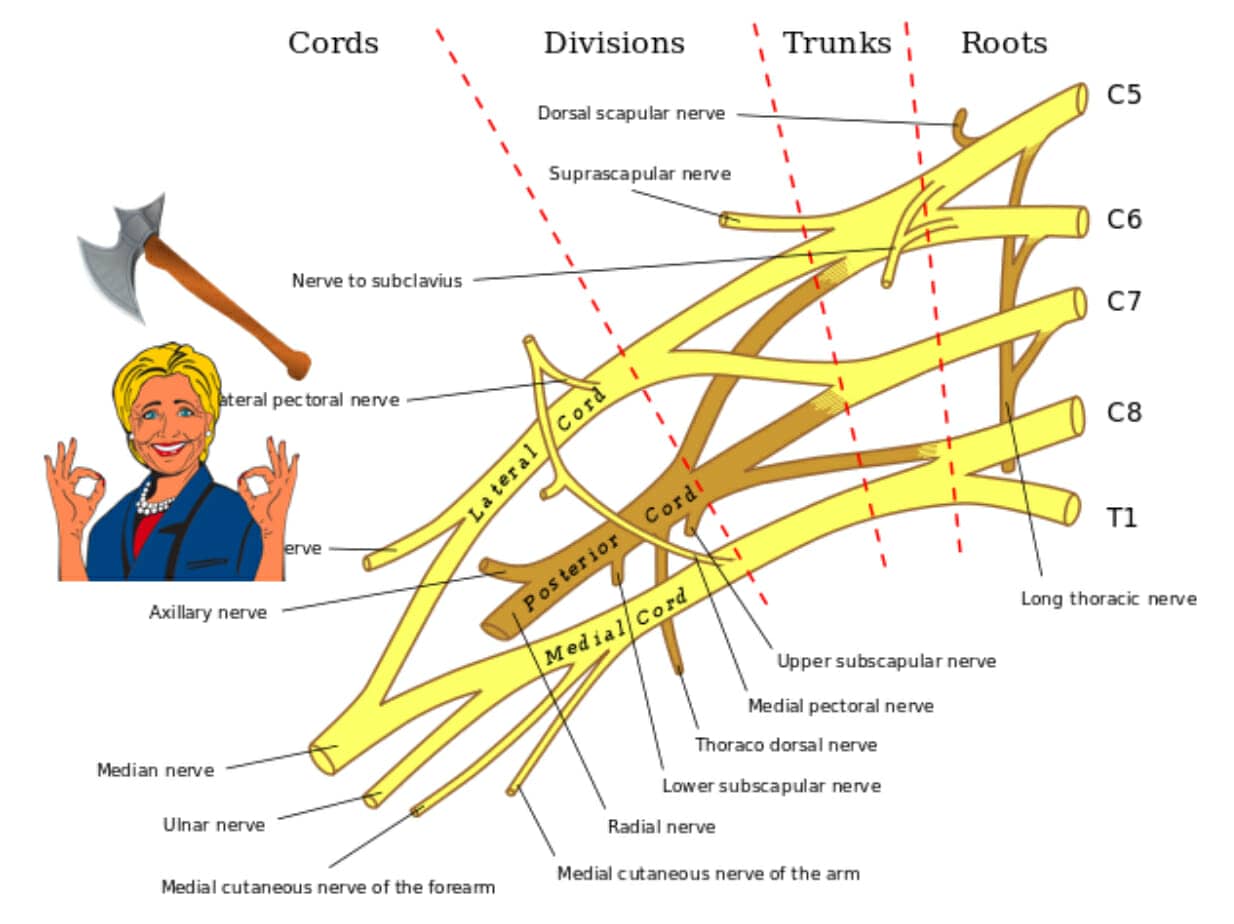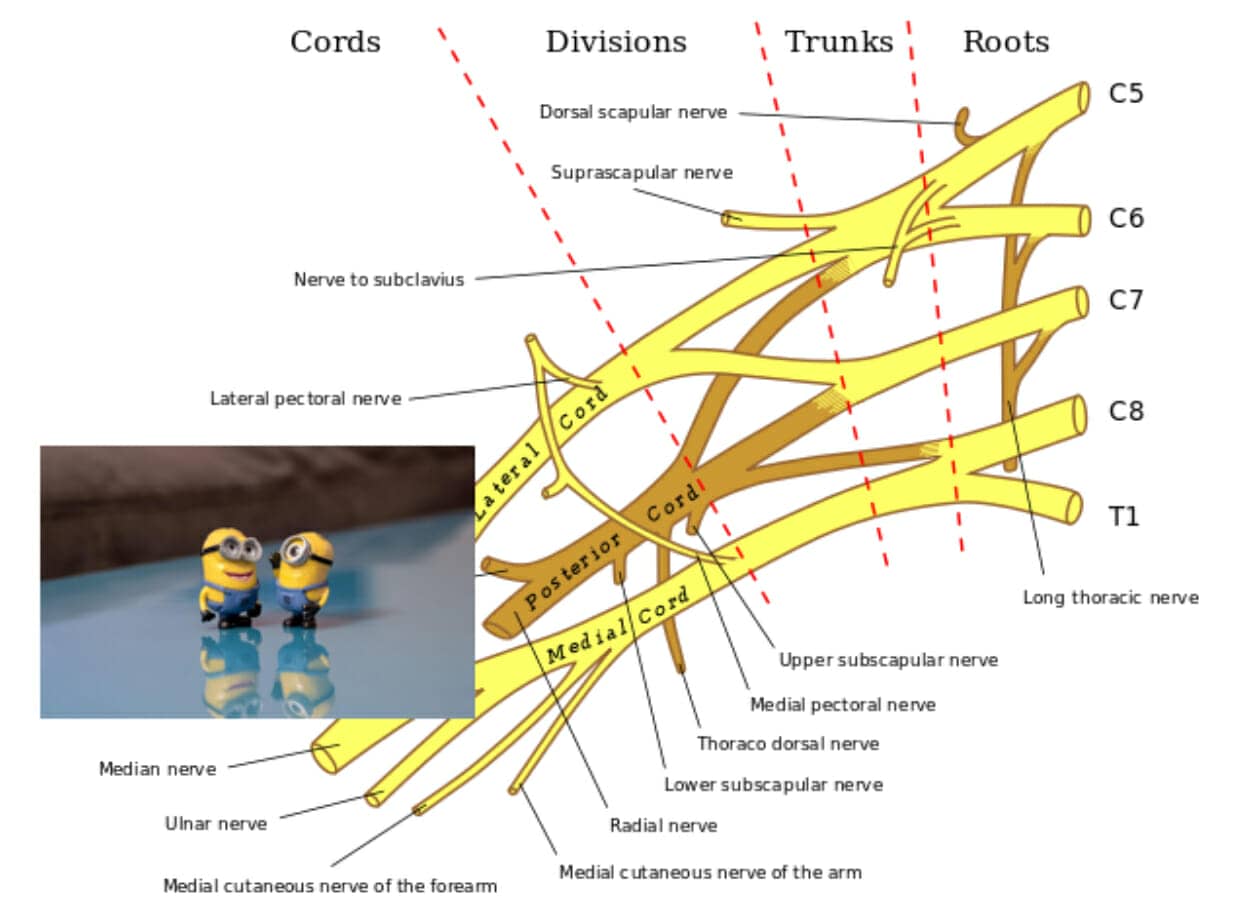 Good brachial plexus mnemonics are hard to find.
Good brachial plexus mnemonics are hard to find.
And most of the brachial plexus acronym examples you come across make zero sense.
As a result, you struggle to memorize the information you need to move past this topic and ace your exams.
This problem ends today.
On this page, I’ll show you how to remember brachial plexus information in as much detail as you like.
The best part?
You’ll be able to use what you’re about to learn to remember everything else in your career.
Ready?
Let’s get started!
Brachial Plexus Mnemonics That Help You Remember Fast
A major learning task for the brachial plexus is memorizing the names of its nerves, where they connect and what they do.
I suggest starting with the names of the nerves:
- Musculocutaneous nerve
- Axillary nerve
- Median nerve
- Radial nerve
- Ulnar nerve
To memorize them quickly, one of the best memory techniques is the pegword method.
This mnemonic approach works by looking at the spellings of words and making associations on that basis.
Ideally, these associates are concrete and specific, not vague and abstract. Here’s what I mean:
Musculocutaneous nerve
Many people might think of a muscular man. That’s an okay medical mnemonic.
But the Magnetic Memory Method Masterclass teaches you to use a specific association, like Elon Musk.
You can even imagine Elon Musk doing something to this nerve.
And to memorize that it connects to C5-C7 you can use the Major System or a number rhyme.
Axillary nerve
Following this same principle, we can think of familiar people to help us out. For example, axillary nerve strongly suggests Axl Rose and Hillary Clinton.
You can also combine an axe with Hillary Clinton in a striking way to remember this nerve.
If you place this association below Elon Musk, it will help you remember its location too.
Median Nerve
Sometimes you’ll have words like “median” that don’t suggest immediate associations like the ones that we’ve looked at.
For a sound like “me” and “dian,” you might have to imagine yourself near the median nerve, pointing at yourself.
You may also have to see a person named Dan with you.
Or you can use something like the Minions from the movie Despicable Me.
This is a good choice because minion starts with M and like median nerve. The word “minions” has a similar ending too.
Radial nerve
For this nerve, it’s easy to image a radio blasting music into this nerve within the brachial plexus.
Ulnar nerve
Here’s another challenging word. To deal with this kind of word, you can dig deeper into it. Deal with just the first two letters and two images based on them.
For example, Uma Thurman and Liam Neeson could be good. You might imagine them in the ultimate battle for narcotics. (Ul + narcotics = ulnar).
Memorizing the Nerve Roots
I mentioned earlier that you can use number systems to memorize the various connections within the brachial plexus.
I would choose a PAO System for this task.
For example, to remember that the radial nerve root is C5-T1, I would use Cookie Monster with Sal from Dog Day Afternoon and Thor with a sad tragedy mask.
The exact images you choose for your PAO System, is up to you, so check out this tutorial to learn more about how to use it.
Yes, this kind of mnemonic system takes a little longer to set up. But most people find that it’s well worth the effort.
Brachial plexus mnemonics for their functions
Now that you know how to memorize the brachial plexus parts, let’s talk about memorizing their functions.
This is easy once you have your core images in play.
To remember that the musculocutaneous nerve flexes muscles in the upper arm and does so at both the shoulder and elbow, you can use your core image. Just imagine Elon Musk flexing his muscles with really big shoulders and elbows.
You can then imagine Hillary Clinton rotating her shoulder as she swings that axe to remember that the Axillary nerve helps the shoulder rotate. It also helps us lift our arms away from the body, so it’s easy to imagine her doing that.
Next, repeat this process for the rest of the nerves so you can rapidly remember their function.
Ready For The Next Level?
If you enjoyed these brachial plexus mnemonics, you can learn even more by using a Memory Palace.
If you’d like to learn this technique for free, sign up for my Memory Improvement Kit:
It will give you more lessons on how to use your memory to learn any medical terminology faster.
Enjoy and thank you for taking steps to learn this terminology. We need more highly professional medical personnel and I commend you for taking steps to learn as deeply as possible.
Do you know how rare and valuable that is in today’s world?
Go out there, master your field and help as many people as you can.
The world’s waiting for you!
Related Posts
- Effective Sacral Plexus Mnemonic + Lumbar Plexus Mnemonic
Stop seeking the best Sacral plexus mnemonics. Learn the correct way to instantly memorize the…
- The Only Planet Mnemonic You Need
Looking for the best solar system mnemonic? Don't settle for anything but the best. Learn…







